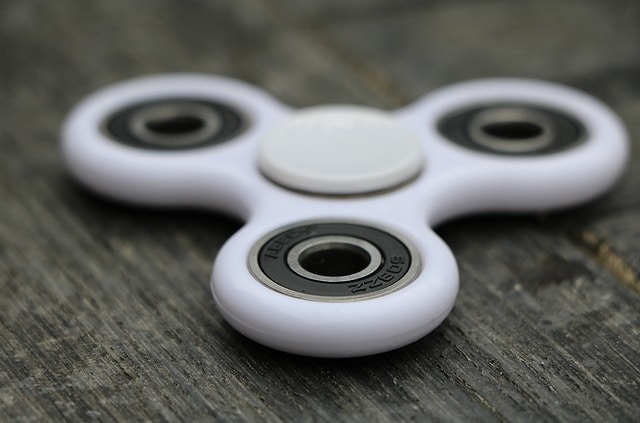Who invented the Fidget Spinner?
Chances are if you, like me, are the parent of a ten year old, you’ve been exposed to the latest toy craze – the fidget spinner. Hopefully your introduction to the fidget spinner was not by way a call from the school principal’s office as many schools are banning the devices because they believe they are a distraction. Others are touting the benefits of the spinner as an aid to help kids with ADHD focus. Forbes Magazine is even promoting the device as a stress reliever for busy executives, calling it “the must-have office toy of 2017”. Trying to buy one of these devices is also a good test of your patience. My daughter and I went to several toy stores to acquire one, with the same result everywhere – SOLD OUT! After ordering one on Amazon, we were surprised to find that it would not be shipped for nearly a month – a long time for a ten year old to wait (not to mention a long time for a parent to answer the inevitable daily question – “did it come in the mail today?).
With all this demand, you are probably thinking “I wish I had invented that. I bet the inventor is making a fortune!” That’s where the story gets interesting (if you are a geeky patent attorney like me).
Wikipedia and a number of other “reliable” online resources list Catherine Hettinger of Florida as the inventor. Many articles have been written on how Hettinger didn’t make a dime off the latest craze because she couldn’t afford the $400 fee to renew her patent (US Patent No. 5,591,062) in 2005. Those reports are misleading and inaccurate for at least two reasons. First, for patent applications filed before June 8, 1995, the lifetime of a patent, assuming all maintenance fees are timely paid, is the longer of 17 years from the date of issue or 20 years from the date the first application for the patent is filed. Hettinger’s patent application was first filed on February 10, 1992 and issued on January 7, 1997. Even if she had timely paid the 2005 maintenance fee and all subsequent maintenance fees, her patent still would have expired on January 7, 2014 – nearly three years before the fidget spinner’s rise in popularity. Second, even a cursory examination of the claims of Hettinger’s patent reveal that her “finger spinner” is very different from the fidget spinners currently on the market (when you can find them that is), and her patent claims would not be infringed by the products currently being sold as the fidget spinner. The claims – those numbered paragraphs at the end of a patent that read like a poorly translated instruction manual – are what ultimately determine the legal scope of protection afforded a patent. Draft the claims too narrow and someone can make minor adjustments to their product and avoid infringement. Draft them too broadly and you will likely not get a patent issued, or, if issued, it may later be declared invalid. Claim drafting is an art and a science best left to experienced practitioners. Many people who prepare, file and prosecute their own applications later discover that the patent granted is virtually worthless because the claims were either too broad or too narrow. On the other hand, many people who deem their idea worthy of investing in the services of a good patent attorney end up with patents that are worth 10-1000 times their investment. You want to be that second guy, don’t you?
Another person who claims to be an inventor of the fidget spinner is Seattle IT guy Scott McCoskery who was interviewed on NPR’s All Things Considered on May 4, 2017. A review of the transcript of that interview reveals a significant issue with regard to McCoskery’s claim to patent rights. According to the interview transcript, about three years ago (red flag!) McCoskery built what he believes to be the first fidget spinner as we know them. Then he shared pictures (bad idea) with an online community, and started selling (another bad idea) what he called the Torqbar. The transcript goes on to state that “McCoskery partnered with a longtime friend to sell the spinners full time, and they filed for a provisional patent last year. 35 USC 102 provides that a patent shall not issue on an invention where a public disclosure or sale was made by the inventor more than one year before the filing of an application. Thus, from the transcript, McCoskery’s filing of his application last year for something that he publicly disclosed and sold about three years ago appears to be very problematic.
We may never know who truly invented the fidget spinner, but a few valuable lessons can be learned from the tales of these two inventors. 1. File at least a provisional application for your invention BEFORE you make a public disclosure or sale, or at a minimum within one year of that first disclosure or sale. 2. Your idea is worthy of investing in the services of an experienced patent attorney to prepare your application and shepherd it through the process. 3. Don’t believe everything you read on the internet (unless of course you read it on our website www.ipsolutionslaw.com).


